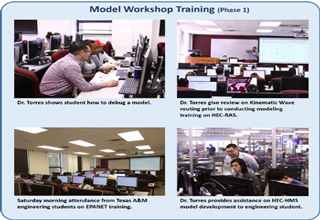Bridging the Modeling Knowledge Gap (Source: Civil + Structural Engineer)
By Jacob Torres
Civil and environmental engineering — as a profession — is becoming increasingly computer based. A drainage engineer cannot easily conjure a physical model of a 100-year storm, even in the best equipped laboratory. Also, use of this “physical model” for evaluating a suite of project alternatives to inform final design would be next to impossible under time and budget constraints.
For these reasons, computer modeling is at the core of success for modern day civil engineering. Modeling allows engineers to gather firm insights on real-world dynamics. Modeling allows engineers to simulate “what-if” scenarios that — in the real world — would prove impractical to test. Modeling allows engineers to predict the performance of complex infrastructure systems, facilitate long-term project planning, and assist clients with decision making.
Yet with all the emphasis on modeling, this critical skillset is not taught in many civil and environmental engineering curriculums. What is conspicuously lacking for many civil engineering students is a healthy integration of classroom theory with project-oriented model training. Data collection (what to look for and where to find it), model development, calibration, validation, debugging, model inference, along with general best modeling practices are just a few skillsets students need to learn. Such skillsets are critical for many civil engineering students prior to job placement.

